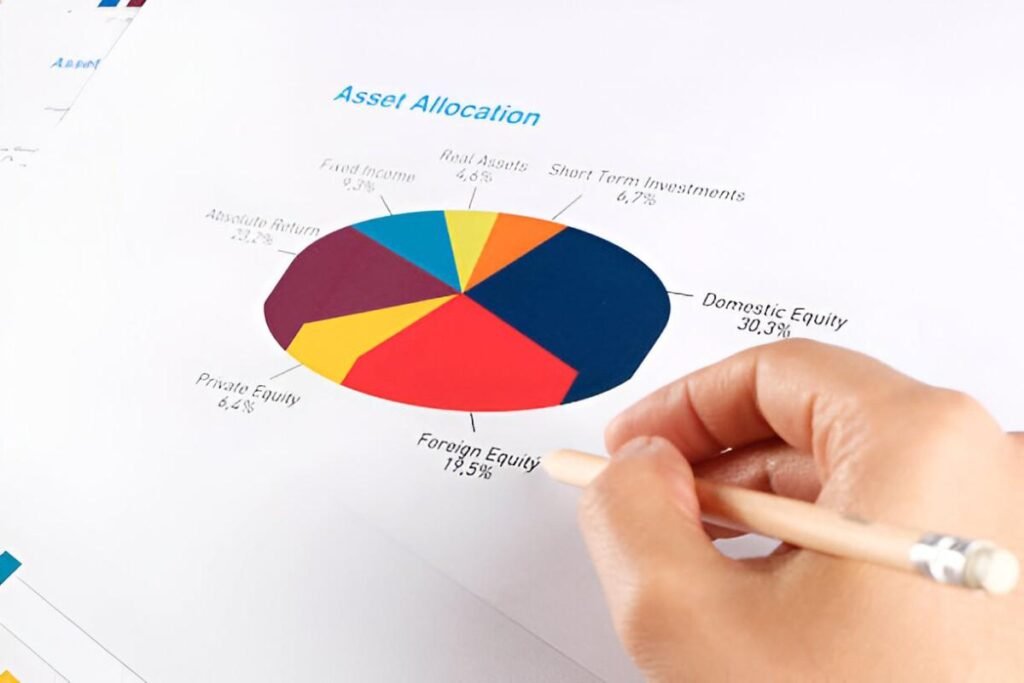As a finance expert, I know asset allocation matters more than stock picking or market timing. The way you divide your investments between stocks, bonds, and other assets determines most of your long-term returns. But the right mix changes as you age. Younger investors can afford more risk, while older investors need stability. In this guide, I break down the best asset allocation strategies for every age group, backed by research and real-world examples.
Table of Contents
Why Asset Allocation Changes With Age
Your investment horizon shortens as you get older. A 25-year-old has 40+ years before retirement, while a 60-year-old may need income within a decade. This means:
- Younger investors can recover from market crashes, so they benefit from higher stock exposure.
- Middle-aged investors start reducing risk but still need growth.
- Older investors prioritize capital preservation and income.
The classic rule of thumb is to subtract your age from 100 to determine your stock allocation. For example, a 30-year-old would hold 70% stocks. But this oversimplifies things. Let’s dig deeper.
Asset Allocation in Your 20s and 30s
Early in your career, you have time to ride out volatility. I recommend an aggressive allocation with 80-90% stocks and 10-20% bonds. Historical data shows stocks outperform bonds over long periods, even with crashes.
Example Portfolio for a 30-Year-Old
| Asset Class | Allocation (%) |
|---|---|
| US Stocks | 50 |
| International Stocks | 30 |
| Bonds | 15 |
| Cash | 5 |
Why This Works:
- Stocks provide long-term growth.
- International diversification reduces risk.
- A small bond cushion smooths volatility.
The Math Behind Compounding
Starting early is powerful. If you invest $10,000 at age 25 with a 7% annual return, compounding works like this:
FV = PV \times (1 + r)^nWhere:
- FV = Future Value
- PV = Present Value ($10,000)
- r = Annual return (7% or 0.07)
- n = Number of years
By age 65:
FV = 10,000 \times (1 + 0.07)^{40} = \$149,744That’s nearly 15x growth without adding more money.
Asset Allocation in Your 40s and 50s
This is the “wealth accumulation” phase. You likely earn more but have less time to recover from downturns. I suggest shifting to 60-70% stocks and 30-40% bonds.
Example Portfolio for a 50-Year-Old
| Asset Class | Allocation (%) |
|---|---|
| US Stocks | 45 |
| International Stocks | 15 |
| Bonds | 35 |
| Real Estate (REITs) | 5 |
Key Adjustments:
- Reduced stock exposure for stability.
- Added real estate for diversification.
- Bonds provide steady income.
Rebalancing Matters
If stocks surge, your portfolio may drift from its target. Rebalancing ensures you sell high and buy low. For example:
- Initial Allocation: 70% stocks, 30% bonds.
- After a Rally: 80% stocks, 20% bonds.
- Action: Sell 10% stocks, buy bonds to return to 70/30.
Asset Allocation in Your 60s and Beyond
At this stage, capital preservation is critical. I recommend 40-50% stocks, 40-50% bonds, and 10% cash.
Example Portfolio for a 65-Year-Old
| Asset Class | Allocation (%) |
|---|---|
| US Stocks | 35 |
| International Stocks | 10 |
| Bonds | 45 |
| Cash | 10 |
Why This Works:
- Bonds and cash reduce sequence-of-returns risk.
- Stocks still provide growth to combat inflation.
The 4% Rule for Retirement Withdrawals
A common retirement strategy is withdrawing 4% annually. For a $1M portfolio:
Annual\ Withdrawal = 1,000,000 \times 0.04 = \$40,000This adjusts for inflation each year. Studies show this has a high success rate over 30 years.
Final Thoughts
Asset allocation isn’t static. Review it yearly and adjust as needed. The right mix depends on your risk tolerance, goals, and market conditions. By following an age-based strategy, you maximize returns while minimizing unnecessary risk.




